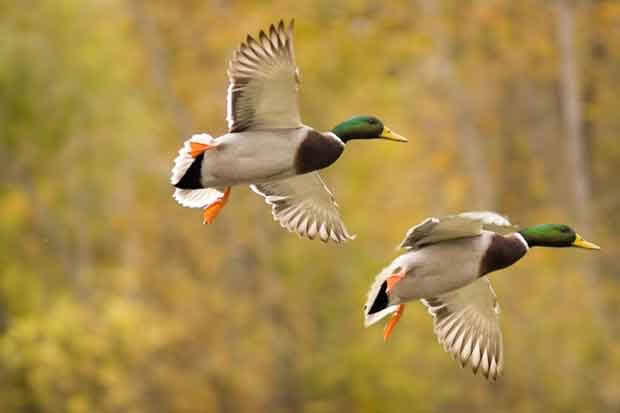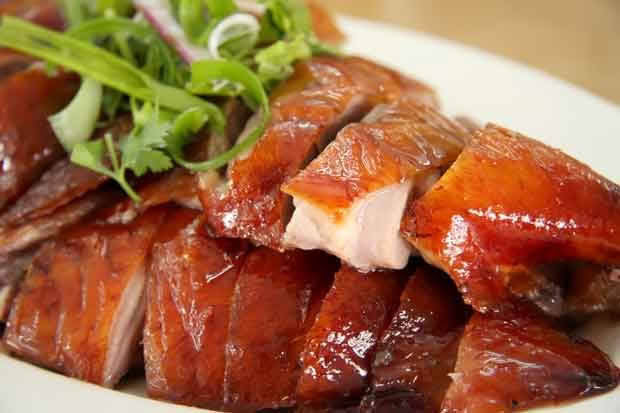A beginner’s guide to plucking a duck

Pluck up the courage to cook with duck. Photo: Dreamstime
Duck shooting season runs from May until August and for many that will mean the arduous job of hunting and plucking before enjoying this gamey red meat.
Words: Nadene Hall
Duck shooting is a sport for some people, an environmental necessity for others. If you are out hunting for ducks this season you should have your license on you at all times, only be hunting in an area when you have permission from the land owner and have the correct gun and shot. This year all shot should be an alternative to lead when hunting within 200m of water more than ankle deep.
Mallard ducks, the most common duck hunted in New Zealand, likes to take off and land flying into the wind and are more likely to be flying around in the first and last hours of daylight as they look for food.
When you’re looking for a good hunting spot you want a place where the wind can make it a bit blustery so the ducks will look for a place to land. Ducks like muddy water and it can pay to “muddy” it up a bit for them if your water is too clean.
If it’s a windy day they will be looking for somewhere to land so having decoys out on the water is especially useful. You want to tell the duck it’s a safe place to land, so a group of decoys facing different directions is a good start. This way if the wind turns you’ll always have a duck facing the right way. Ducks usually know its safe when they see other ducks with their backs to the wind – if your decoys are all pointing into the wind it might look like they’re about to take off.
Large spreads of decoys are more visible to ducks in the air and the larger magnum decoys are easier for ducks to see. Decoys will need repainting so the colours are clear and some US duck hunters even use a car polish to make their decoys look shiny, like real duck feathers or paint the colours brighter so they stand out more on cloudy days.
Duck calling is another important part of the hunting arsenal although hunters sometimes over do it. You want your calls to sound like a happy duck so you need to imitate feeding calls and vary the pattern of calling. The experts say try to sound like a duck, not like a hunter trying to blow a duck call.
PLUCKING OR SKINNING
Plucking is best if you have a younger bird – older birds may need to be skinned instead because it is much easier than plucking feathers out of a tougher skin. While skinning is quite simple, it will affect the moisture levels in the meat when cooking. To avoid a skinned duck from going dry and tasteless you will need to wrap it in something like bacon to keep it moist and delicious.
DRY PLUCKING VS WET PLUCKING
Dry plucking produces a carcass that looks better but it is a very slow process. To keep the skin intact, pull the feathers in the same direction as they lay. Wet plucking of ducks involves dunking the wet bird in and out of hot water (65-70°C) for about 2-3 minutes or so, until the bird is completely soaked. Putting a little detergent in the water can help as it cuts through the oil on the feathers. Don’t soak for too long or you can end up cooking the skin and tearing it off as you pluck – test the feathers every 30 seconds or so. Feathers should be easy to rub out if this is done correctly – if they don’t come out easily, soak for a little longer. Pin feathers will be difficult to remove and tweezers can be handy or you can singe them off but you do risk damaging the skin.
Wild duck should have its entrails and head removed then be left soaking in cold water for an hour or two to remove excess blood. Wings can be removed by cutting them off at the joint if required. If you plan to eat your birds at a later date, make sure they plucked and cleaned before putting them in the freezer, preferably in a sealed bag.
HOW TO COOK DUCK
Duck meat is very different to chicken, staying a red-pink colour when cooked and tasting a lot more gamey. If it’s too gamey for your tastes, trim off as much of the fat as possible.
It also tends to be dry, which is why if you have skinned a bird it is important to wrap it in bacon to help stay as moist as possible. Use toothpicks to hold the bacon in place.
Because duck meat stays pink it can be hard to tell when it’s safely cooked. Juices should run clear and you should be able to easily fork the meat. You should also use a thermometer to test it – put it into the thickest part of the thigh, avoiding the bone, and don’t take the bird out of the oven until it reads 85°C. Check any stuffing at this point – it should be at 75°C before you take the bird out of the oven.

The best way to check whether duck is cooked is by using a thermometer.
Duck should not be basted or cooked while sitting in their own fat. Put the duck on a rack and prick the skin so fatty juices can run out. To roast a wild duck, rub the outside with a slice of onion then sprinkle with salt and pepper. If you want to flavour the meat, put a quartered onion, apple and potato and a small bunch of celery in the cavity but discard this after cooking.
If you want to baste your duck, great options are orange juice, melted butter or red wine.
For crispy skin you can either slowly pour a kettle of boiling water over the duck before cooking, then pat dry with a paper towel or sprinkle it all over with salt and leave for a couple of hours, then pat dry. You can then sear the skin in a pan of oil.
Ducks have two glands under their rumps that should be removed or they will give the bird a strong, mucky taste.
Always season a duck well, inside and out, with salt and pepper no matter how you cook it.
For a 2kg bird you’ll be looking at about 1 ½ – 2 hours cooking time at 180°C, for a 3kg bird around 2 – 2 ½ hours.
SERVE
Duck tastes great with a berry or plum sauce. This dish is rare duck on a bed of salad with camembert, and plum sauce.
Love this story? Subscribe now!
 This article first appeared in NZ Lifestyle Block Magazine.
This article first appeared in NZ Lifestyle Block Magazine.
